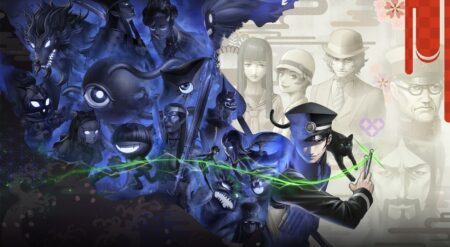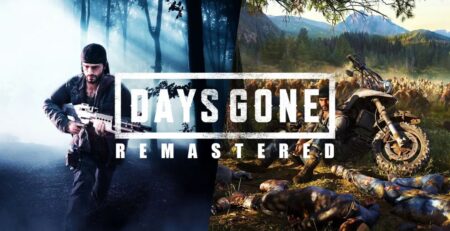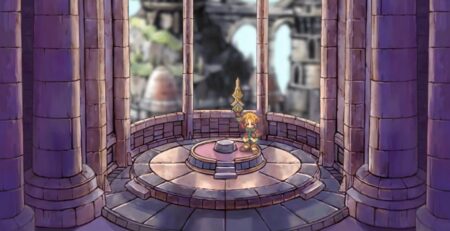I liked Rise of the Ronin in its opening hours. The action role-playing game developed by Team Ninja and published by Sony Interactive Entertainment had a lot going for it. The combat was engaging, the story was off to a good start, and the traversal was solid. There was enough there in its first few hours that had me hopeful for the rest of the ride. However, it seems Rise of the Ronin showed its entire hand in the early section of the game. While the combat is engaging and fun throughout, the story, open world, and mission variety ultimately end up disappointing. It tries to do too much and buckles under its weight.
Rise of the Ronin has you playing a Veiled Blade of your creation. Veiled Blades are basically trained assassins who are set up to go after the Shogunate. You embark on a massive adventure across feudal Japan when your home is attacked. Ronin is set in a really interesting period in 1800s Japan during the political unrest, a cultural revolution, and the end of the Shogunate.
Foreign influences are encroaching as the black ships of the West move in. Japan has had its walls up for years — what happens when they come down? Cholera and other diseases are sweeping through the population. The power struggle between the Shogunate, who wanted to open borders, and the Anti-Shogunate, rebels trying to prevent foreign influence, took center stage.
The narrative can be heavy and intricate, but the writing just doesn’t support it enough. Rise of the Ronin wants you to pick sides, making decisions that seemingly impact the rest of the game. Do you stand with or against the Shogunate? If Team Ninja had focused on this and built a rich story around it, Rise of the Ronin could have been great. What it is, instead, is the illusion of choice. You will make choices, but they don’t matter. The greatest choices you’ll make are choices of life or death, sure, but the story happens regardless.
What’s frustrating is that the mission structure doesn’t support the narrative. I decided to side with the rebels, choosing to fight against the Shogunate throughout the story. One of my biggest issues is that I made that decision, but then, on the next mission, I’m doing tasks for the Shogunate as centuries of the Tokugawa Shogunate come to an end.
There’s no choice here. There aren’t two options. There’s only the central narrative. The branching pathways don’t branch — they just expand and contract around the story. You’ll be best friends with a character, fighting alongside them in one mission, then have to battle them in the next mission.

I couldn’t get over the narrative dissonance this created. I stopped caring about the narrative and the choices I was making. Why put thought and effort into the future of Japan if my actions have no consequence? Some characters may live or die, but that’s it. There’s no more to it.
Adding to the issues is the absolute landslide of characters you’ll meet along the way. It honestly gets hard to keep track of. Because the game makes you play essentially both sides, some characters just disappear for hours. You’ll spend Act 1 with a group of characters, getting to know and care about them, then be ripped away from them. I wish I could have run missions with the group I sided with rather than being forced to the other side. The characters will also comment about you playing both sides, but quickly forgive and forget because…reasons.
Rise of the Ronin has bond missions and relationships, but they’re superficial. You’ll get to know the characters a bit more through their missions, but the bonds at your base, the longhouse, are completely missed opportunities. As you meet and get closer to folks, they can stop by your longhouse. There, you can give them gifts and have shallow conversations, such as what their favorite food is. This could be charming but ultimately doesn’t work as you never really establish a connection with any of them. There are just too many to connect with properly.
As you expand your relationships, the rewards you get are simple. Some will give skill points, others will provide skill points for specific trees, and hitting certain levels will unlock the next side mission for that character. Your skill trees separate into Strength, Dexterity, Charm, and Intellect. By the end of the game, I had so many points and so much money that I never missed the ones I didn’t get.

The skill trees themselves are just okay. You’ll find specific skills and double down on them, while other skills feel superfluous. Once I saw my favorite combat styles, I focused on skills that helped improve them. That led me to ignore large parts of the trees because they didn’t feel helpful. I wish the skill trees were more streamlined and had more impact on the larger play styles.
The mission variety doesn’t change throughout the game. Go here, kill X number of enemies, move on, and do it again. Rise of the Ronin does start to toy with this at points, including no-kill missions, but then completely abandons it again. It’s a very Far Cry map design. I found myself engaging with the side content a lot initially but less so as time went on because it all felt the same. The good thing is that the deep accessible combat carried the experience whenever I did.
Rise of the Ronin’s combat is what kept me going throughout the entire experience. It is the best part of the game. It feels arcadey and fast enough while offering different experiences with each weapon. I started the game with dual blades and a sword, and a katana was to be used. After a few hours, I found a love for the giant odachi and swapped out my katana before returning full circle to the dual blades.
The fast flurry of attacks was always fun. Each weapon has different martial attacks—special moves that can break down the enemies’ Ki bars. Doing so enough will break them and create an opening for a critical hit, if you watch your stamina. The dual blades have a martial attack that feels ripped out of anime, which became my favorite—a quick bow before warping behind the enemy, a flurry of cuts enveloping my adversary.

Each weapon has different stances that are better against certain enemies. Enough weapons will unlock new ones, defeating specific higher-level foes on the map. Each stance has different martial attacks, as well. Switching between them midbattle is seamless. Once the combat clicks, you’ll quickly switch stances and weapons and use Countersparks on the fly. Counterspark is Rise of the Ronin‘s parry system. Time it correctly, and you’ll be able to get in some quick hits on the enemy and reduce their Ki bar further.
The combat carried Rise of the Ronin for me. Finding the right weapons, switching between them, and fighting through groups of enemies was always fun. The stealth system supports this further. Sneaking through and assassinating enemies, using your grappling hook to whip them up to you for a quick kill, and other abilities make the stealth mechanics sing. The biggest issue with both stealth and combat ended up being the camera.
Ronin has many extensive open combat areas but often brings you inside tight corridors. The camera can get stuck in awkward positions—behind walls, in the ground—which can cost you valuable health and attack opportunities. Even in the open world, the camera can wig out if you get backed up against a house or tree. You don’t only have enemies to worry about; you have to fight the camera at points, too.
The open world is a pretty basic version of the open worlds we’ve seen repeatedly. Each area has different missions to complete. Enemy camps, cats, photography spots, random challenges (shooting and gliding, for example), and shrines, among other things, litter the map. Folks who love Ubisoft-style open worlds will find a lot to do here. The checklist style of the open world is refined, but I found it serviceable here. Nothing about it jumped out as particularly unique.
Yokohama is an early highlight in terms of the environment. The traversal clicks there, as there are plenty of grapple points to get onto buildings and others to launch yourself into the air, landing on your horse to keep the momentum. The issue is that none of the later areas reach this level of synchronicity, not even in later cities or towns. The open fields are truly just for horseback. I would have loved more of these scattered grapple points, as they made the traversal a lot more fun.

Rise of the Ronin isn’t the prettiest game, either. The graphics look dated. There are moments of beauty—cherry blossom-laden roads and sweeping vistas—but you can’t help but wish it looked better. I never had the wow moments that Ghost of Tsushima, a game that came out four years ago, gave me. The art style is excellent and helpful, but Ronin doesn’t look like one of the best games.
Technically, Rise of the Ronin had some issues as well. It offers three modes to play — one focused on graphics, one on performance, and an in-between point. I used the performance mode the entire time, and even then, the game dropped frames often.
This was most apparent in big cities and cut scenes. The game never felt like running at 60fps, more like 40-45fps, frequently dropping to around 30fps when chugging. Texture pop-in was also a frequent issue, most apparent in cut scenes. Trying to focus on conversations was distracting when the background had textures changing. Hopefully, patches will help smooth out the overall experience.
The multiplayer also ends up feeling like an afterthought. When loading into a mission, you pick companions to join you. It’s here where friends can hop in to help fight. The joining process was easy. It was fun running through and coordinating attacks, but I was booted back to my game as soon as the mission ended. If you’re helping a friend progress, you’re just stuck back in your game until they reach the next mission that allows co-op. I would have loved to run around the open world together, taking out camps and completing objectives, but co-op is limited to just those specific missions.
Ultimately, Rise of the Ronin will be a mixed bag for people. The combat will carry it for many, but the lack of variety in the open world, messy story, and performance issues will take away from others. Rise of the Ronin isn’t a bad game, but it’s average. If Team Ninja had focused on a few core tenants and drilled down on those, Rise of the Ronin could have been great. Instead, it tries to do too much, with each system just being okay and losing itself quickly to the next new thing introduced.
Rise of the Ronin is available now on PS5.
A code was provided for review by Playstation Canada.
Rise of the Ronin
-
Rating - 7/107/10
TL;DR
Ultimately, Rise of the Ronin will be a mixed bag for people. The combat will carry it for many, but the lack of variety in the open world, messy story, and performance issues will take away from others.







